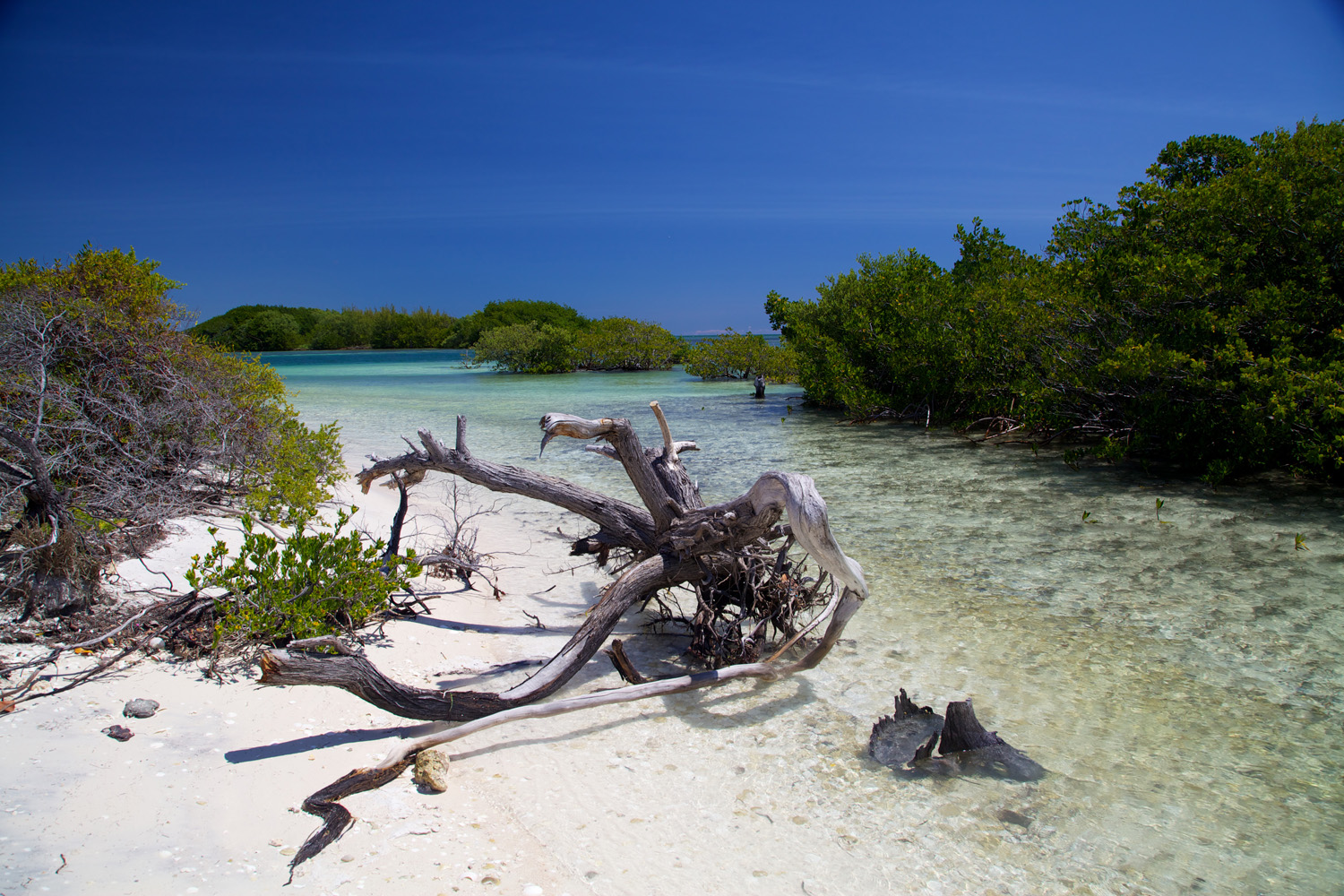Biscayne National Park
Located: Florida - Established: June 28, 1980
The Park: Most of Biscayne is an underwater wilderness filled with a wide variety of sea life. Below the surface, colorful coral reefs, exotic fish, manatees and turtles will dazzle you! Unlike land-based parks, 95% of the park is underwater! Most of the 5% of the park that does contain terra firma is found mainly on northernmost of the Florida Keys, which lie approximately 6-10 miles off the mainland in Biscayne Bay. Elliott Key, the park’s largest island, is considered to be the first in a long chain of the Florida Keys. These islands are what remain of ancient coral reefs, which formed when ocean waters were much higher than they are today.
This park was created to protect one of the world’s most extensive coral reefs along with the longest stretch of mangrove forest on the east coast. The park also protects endangers species such as the Florida Manatee, the Loggerhead and Green Sea Turtles, the American crocodile and the colorful Schaus Swallowtail butterfly.
Ornamental lighthouse on Boca Chita Key. Park visit #54.
Getting there: Within sight of downtown Miami, getting to the Visitor’s Center of Biscayne National Park is easy. Getting into the main sections of this park is a bit more challenging, as only 5% of the park is land based!
When to visit: Florida’s dry season and the best time to visit is from mid-December to mid April. Summer months are wrought with mosquitoes and thunderstorms; however, this time of year is ideal for snorkeling and diving.
What to do: This aquatic wonderland is ideal for snorkeling, diving, boating, canoeing and kayaking. There is only one mile of paved road in the park and only two hiking trails – both on Elliott Key - so visitors must take to the water to get a true sense of the park’s charm.
For divers, Biscayne’s Maritime Heritage Underwater Trail features the sunken remains of six of the parks many shipwrecks. Access to this trail is by boat only. The wrecks have been mapped and mooring buoys have been installed. The newest addition to the trail is Fowey Rocks Lighthouse where snorkeling is sensational around its base.
Glass bottomed boat and guided canoe and kayak tours (when available) offer visitors a great way to explore the park. Tours are mainly offered during the winter months.
Shoreline on Boca Chita key
Where to stay: For lodging, you will find opportunities outside the park boundaries in Homestead and Florida City as the park does not have any lodging within its borders. Camping inside the park requires boat transportation to either the Boca Chita Key or the Elliot Key.
Wildlife: One of the most unusual critters that can be found floating about Biscayne is the Manatee. These “Sea Cows” can grow to up to 12 feet long and weigh as much as 3,500 pounds. These harmless beasts have lungs as long as a basketball player and to efficiently submerge their massive bodies into the water, they pass enormous amounts of gas! Eyes like a puppy, they will occasionally roll over and allow you to rub their bellies!
Memorable moment: During our eco-tour interpretive cruise to Boca Chita Key, the Ranger who narrated the tour stated that if climate change continues to cause the sea level to rise, the entire park will be underwater not too far in the future as it once was thousands of years ago.
Mangrove forests are common along the shorelines of Biscayne
Trivia: Biscayne's Maritime Heritage Trail is the only underwater archaeological trail in the National Park System. The "Shipwreck Trail" includes six wrecks spanning a century of maritime history.
Banner: Rusted canon by the ornamental lighthouse on Boca Chita Key.
Experience these Check List:
- Stop by the Dante Fascell Visitor Center
- Visit Elliott Key
- Take a guided Boat Tour
- Snorkel the park’s shallow reefs
- See a Manatee
- Learn about the Mangrove forest




